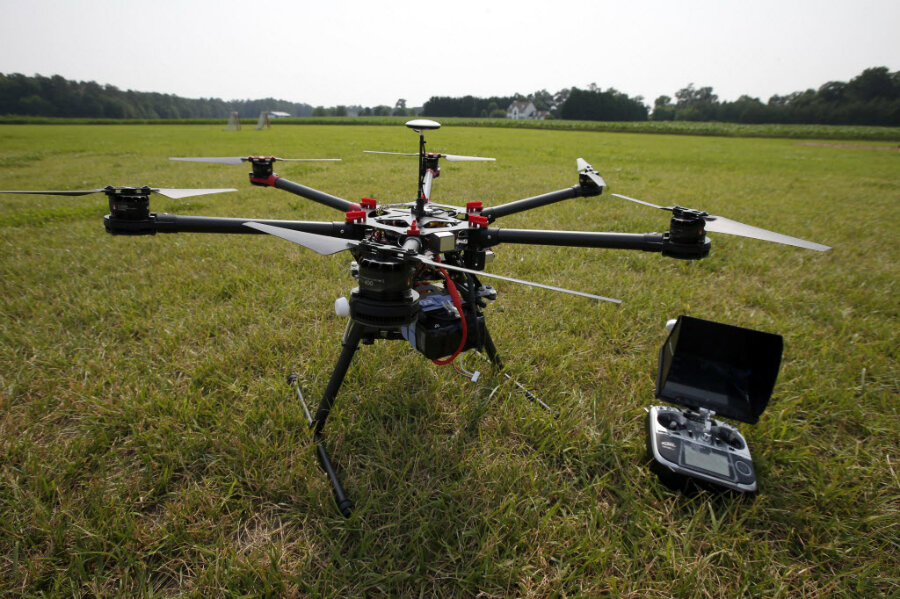What drones could do for farmers
Loading...
More and more farmers are beginning using drones to tend to their crops, and a new report says the flying machines could soon fundamentally change agriculture.
A Bank of America Merill Lynch Global Research report said farmers would use drones to capture data on planting and harvesting. Robots could also be introduced to take over many of the arduous duties normally conducted by laborers.
Investors are projected to spend $16 billon on agricultural robots by 2020, the report says. The Association for Unmanned Vehicle Systems International Agricultural said drones could make up 80 percent of that market.
Just as mechanized devices such as steam engines increased production and reduced physical labor in the 1800s, the American Farm Bureau Federation said drones could help farmers quadruple returns on investments for certain crops in the coming years. For soy and wheat, that could mean a rise in yields from $2 or $3 per acre to $12 per acre, according to the Boston Globe.
Some farmers are already using drones are to spray fields with pesticides and survey land for data. More companies are jumping on board to create drones specifically for farming.
Kevin Price, a plant ecologist at Kansas State University, told the Globe data analytics are also being created for agriculture.
“The beauty of the whole thing is that it saves the farmer money and helps the environment, too,” said Price, who now works for AgPixel, a company that makes drones, told the Globe.
Not all farmers feel that way. Drones are not simple to use and on the low end can cost about $2,000, a small expense for big operations but not necessarily for family farms.
USA Today said the Federal Aviation Administration has yet to set up-to-date rules, which are raising alarms from privacy advocates. Details on laws related to wiretapping, the use of microphones, and air space have yet to be addressed, some say.
Nonetheless, research universities are pouring resources into agricultural drones. The University of Minnesota’s Precision Agriculture Center is using infrared cameras on aerial and ground-based drones to pinpoint nitrogen deficiencies in soil and to better manage crop outputs.
The Aviation Program at the University of Louisiana at Monroe is also jumping on board. Sean Chenoweth, a ULM associate professor, said those methods are being termed “precision agriculture. ”
“Once a problem is detected, field inspection is necessary to determine if there is a water shortage or surplus, bug pests, fungus or nutrient deficiency,” Dr. Chenoweth said. “The traditional method has been to treat the entire field for a problem that might just be in one isolated place. Precision agriculture seeks to treat only the affected areas instead of wasting chemicals on the entire field.”
Collecting data on soil composition and crop health is perhaps agricultural drones' most promising function, according to the center. The unmanned aerial vehicles are able capture crucial information that even satellites cannot always gather because of cloud cover.
A report by the non-partisan think tank A Partnership for New American Economy said United States farmers are seeing a labor shortage that costs them $3.1 billion annually, and is lowering fruit and vegetable yields by nearly 10 percent.
As farms grow larger, the use of drones and precision technology is beginning to play a role.
“I think most farmers will want to use UAS to manage their crops and livestock once they start hearing success stories of the potential of this technology from other farmers,” Chenoweth said. “Right now, this is an industry in its inception. But it has the potential of becoming a large-scale industry, one that positively impacts farmers across our nation.”





